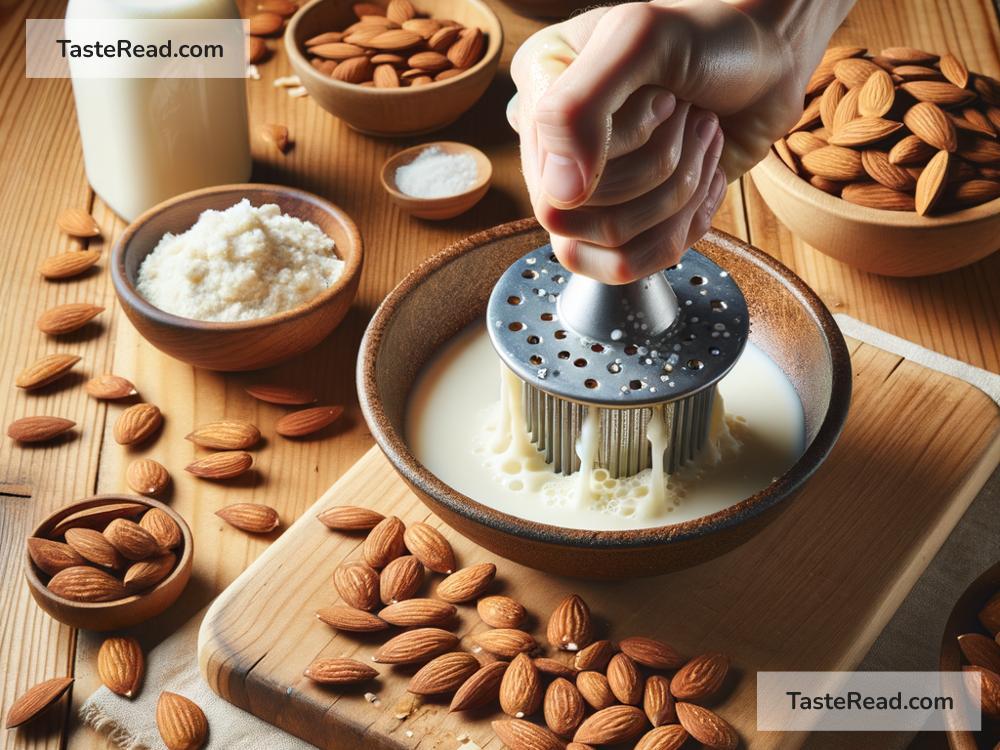Creative Cooking: Turning Almond Milk Pulp Into Delicious Treats
As more people embrace dairy-free alternatives, almond milk has skyrocketed in popularity. But if you’ve ever made your own almond milk, you know it leaves a byproduct behind — almond pulp. Instead of tossing this nutrient-rich pulp in the trash, why not repurpose it into something delicious? In this post, we’ll explore some easy and creative ways to cook with almond milk pulp, turning what would be waste into tasty treats.
What is Almond Milk Pulp?
Almond milk pulp is what remains after blending almonds with water and then straining the mixture to separate the liquid (almond milk) from the solid (almond pulp). This pulp is packed with fiber and protein, making it a nutritious addition to many recipes.
Getting Started with Almond Pulp
Before diving into the culinary ideas, it’s essential to know how to store your almond pulp properly. After making your almond milk, spread the leftover pulp on a baking sheet and allow it to dry at a low temperature in your oven, or use a food dehydrator if you have one. Once it’s dried, you can store it in an airtight container in the fridge for a week or in the freezer for up to three months. Now, let’s get cooking!
Almond Pulp Crackers
Crackers made from almond pulp are a crunchy and healthy snack you can easily customize with your favorite spices or herbs. Simply mix the almond pulp with a bit of olive oil, salt, and any seasonings you like. Spread the mixture thinly on a baking sheet and bake at a low temperature until crispy. Break them into pieces, and voila, you’ve got homemade crackers perfect for pairing with cheese or dips.
Almond Pulp Hummus
Boost the nutritional profile of your regular hummus recipe by adding almond pulp. Mix cooked chickpeas, tahini, garlic, lemon juice, and almond pulp in a food processor until smooth. This adds a subtle nutty flavor and extra fiber to the dip, making it a hit at any gathering.
Almond Pulp Pancakes
Start your day with a batch of fluffy almond pulp pancakes. Substitute part of the flour in your favorite pancake recipe with almond pulp for a nutritious boost. Not only does it add a nice texture, but it also increases the protein content, keeping you full longer. Serve with fresh fruit and a drizzle of maple syrup for a delicious breakfast.
Almond Pulp Energy Balls
For a quick and healthy snack, almond pulp energy balls are perfect. Combine the pulp with oats, honey, peanut butter, and any mix-ins you like, such as chocolate chips, dried fruit, or nuts. Roll the mixture into balls and refrigerate until firm. These are great for a post-workout snack or when you need a little pick-me-up during the day.
Almond Pulp Brownies
Who knew almond pulp could be a secret ingredient in brownies? Replace some of the flour in your brownie recipe with almond pulp for a moist and dense treat. The pulp adds a rich, nutty flavor that pairs wonderfully with chocolate, making for an irresistible dessert.
Breading for Baked Goods
Almond pulp can also be used as a gluten-free breading alternative. Mix it with spices and use it to coat chicken, fish, or vegetables before baking. It results in a crispy exterior without the need for bread crumbs, adding a nice texture and flavor to your dishes.
Incorporate in Soups and Stews
Lastly, almond pulp can act as a thickener for soups and stews. Just add a tablespoon or two towards the end of cooking for a creamier texture. This is especially useful in vegan recipes where you want to add body to your dishes without dairy.
Conclusion
Throwing away almond milk pulp is like tossing out a treasure trove of culinary possibilities. By incorporating it into your cooking, you’re not only making use of the whole almond but also adding nutritional value to your meals. From snacks and breakfasts to main dishes and desserts, almond pulp can be a versatile ingredient in your kitchen. So, next time you make almond milk, save the pulp and get creative with these ideas. Happy cooking!


